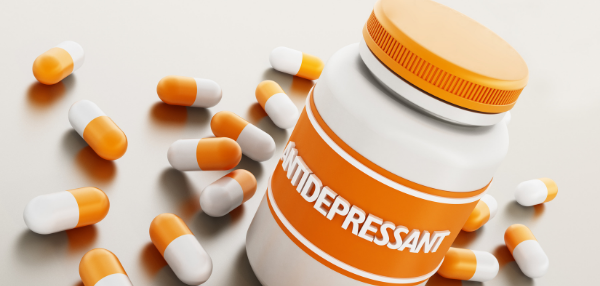In every instance where someone is embarking on a trial of psychotropic medication, I ask two questions: “What are you wanting the medication to do for you,” and “how long do you see yourself taking it?” I ask these questions to determine how realistic the person is about what the medication can actually do for them, and how long it might take to do so.
As the medication journey proceeds though – particularly if the user isn’t pleased with results – the dosage question inevitably arises.
When it comes to dosing antidepressants, more often than not, it’s assumed that “more is more.” But is that true? Let’s take a look at dose-response relationships and optimal dosing ranges for key antidepressants.
First-generation Antidepressants
A general rule of thumb which is routinely taught to prescribing clinicians is that when patients have poor antidepressant responses, the dose should be maximized before switching to another drug. As such, starting doses are increased slowly, eventually reaching therapeutic range, and then raised even further toward the maximum recommended dosing range if measurable results aren’t attained. The older first-generation antidepressants – think Elavil (amitriptyline) and Tofranil (imipramine) – show a linear relationship between blood levels and clinical response. Essentially, this means establishing a blood level range, referred to as a “therapeutic window,” which is necessary for clinical improvement to occur.
Second-generation Antidepressants
As for the newer, second-generation antidepressants, there isn’t a “therapeutic window” guiding dosing of these agents, because these drugs operate via a “flat dose-response curve.” This means that low doses are just as effective as higher doses. The mini-table below shows the ideal daily dosage ranges for bupropion, select SSRIs, venlafaxine, and mirtazapine in depression.
Optimal daily dosage ranges for select second-generation antidepressants in (mg)
Wellbutrin(bupropion)—————-150-300mg
Celexa(citalopram)———————-20-40mg
Lexapro(escitalopram)—————–10-20mg
Prozac(fluoxetine)———————–20-40mg
Effexor(venlafaxine)——————–75-150mg
Remeron(mirtazapine)—————- 15-30mg
The point here is to dose and titrate these antidepressants to the maximum range listed above, and if a clinical response isn’t attained at the highest optimal dose after a 4-6 week trial, it’s prudent to switch to another agent.
Discussions With Patients
When patients come to believe their antidepressant isn’t meeting their expectations for mood improvement, they often lean on the prescriber to increase the dose – often beyond what the prevailing evidence supports and recommends. All too often, prescribers acquiesce to such requests. However, if the patient improves, it’s important to recognize that the resulting benefit may be placebo-driven. And some patients recover due to the depression running its natural course and then remitting.
Then there’s the phenomenon I see often- mood worsening at higher doses. SSRIs for example, are linked to sleep disruption, diminished libido, and emotional flattening – a quite common complaint I hear from people using antidepressants at the higher ends of the dosing spectrum. Also, for the patient who may become interested in discontinuing the antidepressant, withdrawal associated with higher-end dosing can be a real bear.
Lastly, patients with comorbid anxiety disorders and pain, may very well require and benefit from doses up to the FDA-approved maximums, but it’s still wise to intervene by titrating the dose downward when their situation stabilizes to mitigate the longer-term risks outlined above.
It’s clinically wise to dose SSRIs, Effexor, Remeron, and Wellbutrin in the low-to-intermediate ranges to best maximize efficacy while helping keep side effects at bay.
Attribution Statement:
Joe Wegmann is a licensed pharmacist & clinical social worker has presented psychopharmacology seminars to over 10,000 healthcare professionals in 46 states, and maintains an active psychotherapy practice specializing in the treatment of depression and anxiety. He is the author of Psychopharmacology: Straight Talk on Mental Health Medications, published by PESI, Inc.
To learn more about Joe’s programs, visit the Programs section of this website or contribute a question for Joe to answer in a future article: joe@thepharmatherapist.com.
